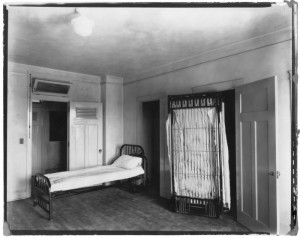History of the Murphy Bed
In 1894, William L. Murphy was a single man living in a cramped studio apartment in San Francisco. At the time, it was not socially acceptable to regale with females in the same room that brandished a bed. Murphy would constantly maneuver around the furniture when entertaining guests, so he decided to design a bed that could rest against the wall when it wasn’t in use. He began experimenting with a folding bed, pivoted on the doorjamb of a dressing closet and then lowered into its standard position. By the early 1900’s, Murphy’s idea was patented and the Murphy bed was in production.
The Murphy bed rapidly gained popularity as city life became vogue and space was at a premium. In 1925 the Murphy Bed Door Company moved its headquarters to New York City. During its heyday, the company produced more than 50,000 Murphy beds annually. World War II saw a widespread drop in the use of compact furniture with production limited due to a shortage of steel. After the war, returning G.I.’s were offered low-cost veterans mortgages and families began to move to the suburbs where they could have roomier homes. Families no longer needed space-saving products.
It wasn’t until the 1970’s that the Murphy bed resurgence began anew when a recession, oil embargos and high interest rates forced many Americans into smaller spaces. Several changes have brought about an increased interest in the Murphy bed. One is the way in which the beds are marketed.
Originally installed in a closet, today’s models are sold in conjunction with cabinets and other built-in furniture choices. This creates the option of combining a Murphy bed with a home office, increasingly essential in today’s home.
Lifestyle trends boosting the market for space-saving furniture include: well-heeled retirees abandoning their suburban homes for smaller condos, adult children staying at home, guest rooms doubling as home offices and young professional couples squeezing into tiny, expensive city apartments.





